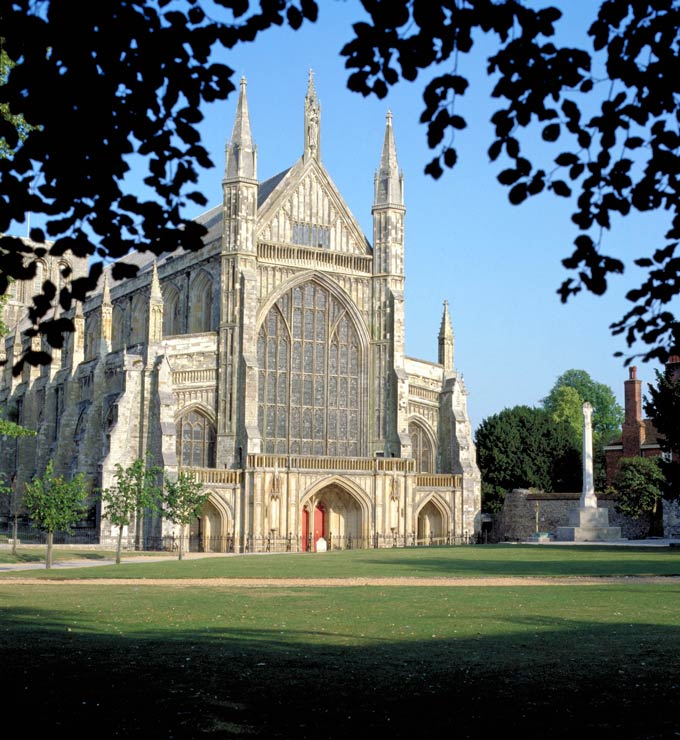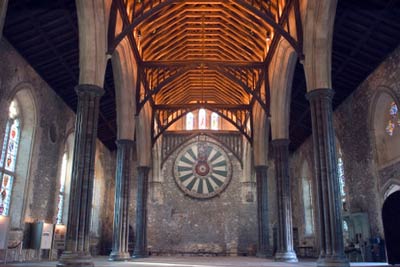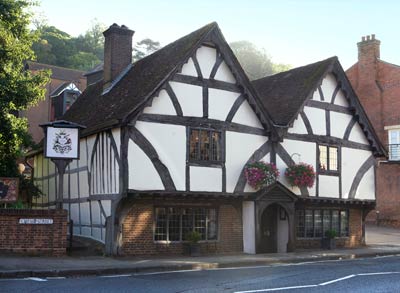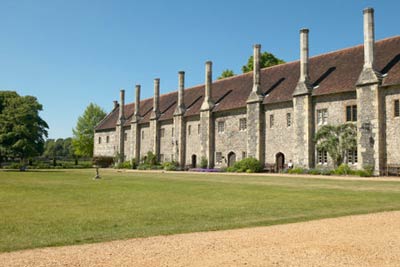We take a tour of this wonderful city and discover an incredible history, beautiful architecture and a thriving foodie scene.

Once the capital of England, the home of kings and legend, and fought over by armies from across the sea, Winchester has an immensely long and intriguing history. From an Iron Age hill fort to the Roman city of Venta Belgarum, through the Dark Ages and stories of the legendary warrior King Arthur, to Saxon times when Winchester became a royal and ecclesiastical city and the centre of Wessex and England, this is a city that has attracted people of power and influence through the ages.
What to see
This history is evident today almost everywhere you look. If you arrive in Winchester by train, a short walk from the station will bring you to the impressive Westgate, the last of the main medieval gates into the city. A debtors’ prison for 150 years, it now houses a small museum. The gate was in use until 1959 when the High Street was routed around it but the view down the hill from here still shows the straight sweep of cobbled street that slopes down towards the river.

Near the Westgate you will find the imposing remains of Winchester Rook, or Winchester Castle as it is often called. A medieval building founded in 1067, today only the Great Hall still stands, but it is a treasure that every visitor to the city must make sure to see. Its shining walls of flint and stone belie their age and inside the proportions seem huge even today.
If you’re a fan of the legends of King Arthur you’ll be fascinated by a huge round table that hangs on the wall of the hall, engraved with the names of Arthur’s knights. The table was originally constructed in the 13th century and repainted in its present form for Henry VIII; there is a picture of the king, large as life, in the centre of the table.
Leave the hall via the tiny back door and you will find yourself in a pretty kitchen garden, named Queen Eleanor’s Garden. A re-creation of an enclosed medieval garden, it is named after Queen Eleanor of Provence and her daughter-in-law Queen Eleanor of Castile, who would have walked there and used it as their private retreat. It’s the perfect place to sit and while away a few minutes, and ponder those women who would have done the same in years gone by.
A short walk from here is a collection of striking buildings that were commissioned by King Charles II who greatly favoured Winchester. Built by Sir Christopher Wren from 1683 this grand palace was modelled after the Palace of Versailles, but Charles died before it was finished. Today the buildings have been converted into flats, while others are home to several excellent military museums.
Of course the main draw for most visitors to Winchester is its magnificent cathedral. One of the largest in the country, it has the longest nave of any Gothic cathedral in Europe and is quite spectacular. Jane Austin’s grave in the north side aisle is one spot every tourist seeks out. Having spent most of her short life in the county of Hampshire, she was buried in the cathedral in 1817 at the age of 41. The inscription on her tombstone records her personal virtues and stoicism, but makes no mention of her writing. A brass plaque was erected in 1872 to redress the omission.
Where to eat

The Chesil Rectory is a wonderful building near the City Mill at the end of the High Street. Situated in a 600-year-old Grade II listed Medieval house that sits below the level of the road the restaurant is friendly and bustling. The food offers clever twists on British classics using local seasonal ingredients – the smoked salmon mousse starter is particularly delicious.
The Old Vine is directly opposite the cathedral and the excellent Winchester City Museum, which tells the story of Winchester from its origins as a prehistoric trading centre through to modern times. The Grade II listed 18th-century inn is the perfect place to stop off for lunch after a busy day exploring the city and offers traditional home-cooked hearty food. It also has six tastefully decorated B&B rooms upstairs at reasonable rates.
The Hampshire Famers’ Market, held on the second and last Sunday of every month at the end of Winchester’s High Street, is the largest regular farmers market in the UK, with up to 90 stalls attending each market. It’s the perfect place to shop for locally-sourced meat, vegetables and artisan produce, and hundreds of people turn out to support the county’s farmers.
Where to stay
The Hotel du Vin is a lovely boutique-style hotel, tucked away from the main tourist hubbub in a stylish Georgian building that dates back to 1715. There’s a French-style bistro that serves truly excellent breakfasts and bedrooms are cosy and well-equipped, huddled around a pretty and secluded courtyard garden.
The Mercure Winchester Wessex Hotel is no architectural beauty but a stay here is worth it simply for the stunning views from the rooms overlooking the hotel. You’ll be woken by the peal of the bells and as you draw back the curtains the hotel appears in all its glory right in front of you.

Explore further
Nestled in the water meadows alongside the River Itchen, about a 20-minute walk from the city centre, is the ancient Hospital of St Cross. The Hospital is one of England’s oldest continuing almshouses and is still a peaceful retreat for the 25 or so ‘Brothers’ who still live here. The unusual medieval buildings with their conspicuous chimneys have provided food and shelter for hundreds of years and visitors are still welcome to come and sample the Wayfarer’s Dole – a horn of beer and a morsel of bread given to any visitor who requests it.
If you fancy exploring the area around Winchester then take a trip to Alresford, about eight miles way. A handsome Georgian town of pastel-coloured houses, this area is know for its watercress farms, due to its clear and fast-flowing chalk streams. The Bell restaurant on the high street is a great place to try some local watercress soup.





 © 2024
© 2024